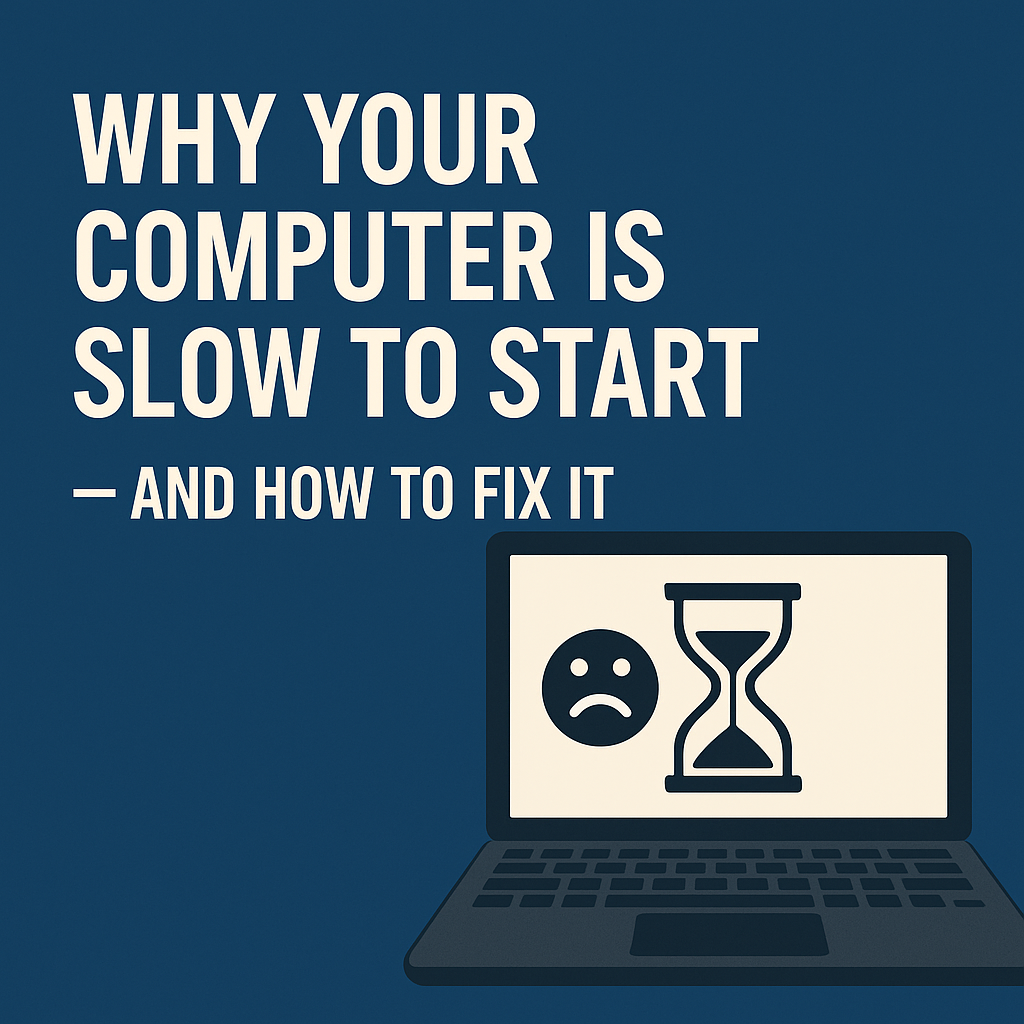Why Your Computer Is Slow to Start — And How to Fix It
A slow startup can be one of the most frustrating issues with a computer. Waiting several minutes for your PC or Mac to become usable not only wastes time but can also impact your productivity. Fortunately, most of the causes behind slow boot times are fixable — even without being a tech expert.
In this article, we’ll explain why your computer starts slowly and what you can do to speed it up.
Common Reasons for Slow Startup
Too Many Startup Programs
Many apps automatically set themselves to run when your computer starts. Over time, this creates a queue of unnecessary software that slows down the boot process.
Outdated Hardware (e.g., HDD instead of SSD)
Older mechanical hard drives are significantly slower than modern solid-state drives (SSDs), especially during startup.
Too Many Background Processes
Hidden processes and services running in the background can delay startup time, especially if you’ve installed a lot of software.
Operating System or Driver Issues
Outdated or corrupt system files, missing drivers, or failed updates can interfere with startup performance.
Malware or Unwanted Software
Viruses, adware, or other malicious software can significantly slow down your system during startup.
How to Fix a Slow Booting Computer
✅ 1. Disable Unnecessary Startup Programs
Windows:
Press
Ctrl + Shift + Escto open Task Manager.Click on the Startup tab.
Right-click and disable any programs you don’t need to run at startup.
macOS:
Go to System Settings > General > Login Items.
Remove any unnecessary apps from the list.
✅ 2. Upgrade from HDD to SSD
If your computer still uses a traditional hard drive, switching to an SSD is one of the most effective upgrades. It can reduce boot time from several minutes to under 20 seconds.
✅ 3. Update Your Operating System and Drivers
On Windows, go to Settings > Windows Update and check for updates.
On Mac, go to System Settings > General > Software Update.
✅ 4. Scan for Malware
Use a trusted antivirus program (such as Microsoft Defender, Malwarebytes, etc.) to run a full scan and remove any threats.
✅ 5. Clean Up Your System
Use built-in tools like Disk Cleanup (Windows) or Storage Management (Mac) to remove temporary files and free up space.
✅ 6. Limit Visual Effects
Windows:
Right-click This PC > Properties > Advanced system settings.
Under Performance, click Settings and choose Adjust for best performance.
Bonus Tip: Enable Fast Startup (Windows Only)
Go to Control Panel > Power Options > Choose what the power buttons do.
Click Change settings that are currently unavailable.
Enable Turn on fast startup (recommended).
When to Consider a Fresh Install
If your system is still slow after trying everything, consider doing a clean reinstall of your operating system. This will remove all bloatware, viruses, and unnecessary files, giving your system a fresh start.
